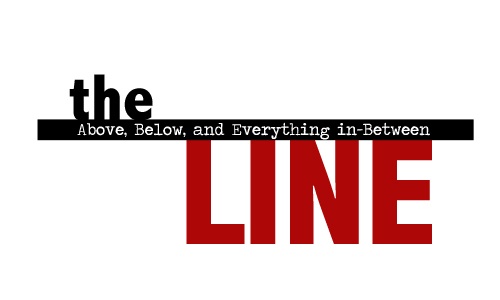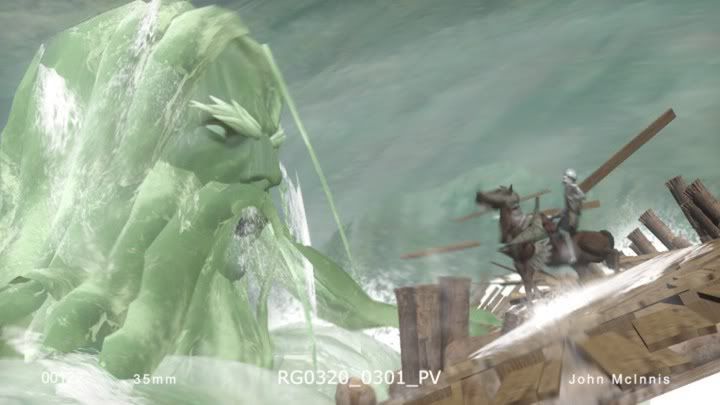So I went back to the drawing board with the following suggestions from my professor (and I'm paraphrasing), "What about Wes Craven or Avatar? Surely you'll find something innovative to write about."
My first thought? "Sure! I'll just whip through my trusty Roladex and give old Wes and James a buzzaroo!"
(and then I found out that I actually do have a contact who is working to put me in touch with Mr. Craven...so perhaps, in the future, I'll do better to squelch my knee-jerk reactions...)
Then, I turned to one of my favorite resources: IMDb.
After scrolling through the crew list for Avatar...WAY to the bottom of the crew list for Avatar...I saw a credit for "The Third Floor - previsualization." (Before I began work on this, my first writing and reporting assignment of the semester, I don't think I'd ever heard the term "previsualization.")
Curious, I looked them up.
Incredibly intrigued by what I discovered, I gave the company a call and requested an interview with the CEO, Chris Edwards.
I also contacted a few other companies on the list, but Third Floor was the first to return my call, and by the end of the day, I had my interview lined up!
Edwards is quite possibly the most engaging and enthusiastic person I've had the pleasure of talking to yet - and let me tell you, between last semester and this, I've likely spoken to nearly 100 people (and I'm not exaggerating).
We had our initial conversation last week, during which Edwards told me all about how he came to build a career as a previs artist (including a two-year stint on the Skywalker Ranch, working with George Lucas - more on that in a later post), and this week, he walked me through the more technical aspects of the craft with the aid of visuals from the impressive body of work the company's amassed since its inception in 2004.
The problem now? I'm only to be writing a 1,000-word story...and I have enough material for a novel. My biggest problem to date (I'm realizing) is that when I become privy to a vast amount of information, I want to share it all. How could I possibly decide what is important enough to share? To me, if it's interesting, it all seems important.
And this was all interesting.
Incredibly exciting, I must say (and that's not just my inner-nerd talking!) & I hope to share more when the assignment is complete. But for now, I'll wrap-up this post with my best attempt at explaining previsualization in a nutshell:
"Previs is a collaborative process that generates preliminary versions of shots or sequences, predominantly using 3D animation tools and a virtual environment. It enables filmmakers to visually explore creative ideas, plan technical solutions, and communicate a shared vision for efficient production."
-from Chris Edwards, Previsualization Society founding member and CEO of The Third Floor.
THE STAGES OF PREVISUALIZATION:
"Pitchvis” is a form of previsualization that is employed in situations where - much like the term indicates - the filmmaker is seeking to "pitch" a project, as might occur during rounds of fundraising, for example. In this scenario, the previs artists create a digital blueprint for a project, crafting representative sequences or teaser trailers – “a proof of concept to show off the director’s vision,” said Edwards.
As might be assumed, "postvis" happens at the near-end of the filmmaking process. Essentially, t is a “quicker and dirtier” preliminary special effects pass. It allows the director and visual effects producers the opportunity to see previs elements laid into completed footage, and make precise decisions before passing the ball to VFX vendors who will craft the more detailed – and costly – final effects art.
Postvis still of River God from Chronicles of Narnia: Prince Caspian (property of The Third Floor)
Traditional previsualiztion itself - during pre-production - is a multi-stage process that begins with the artists building three-dimensional assets. The Third Floor team uses Autodesk Maya software to design characters, props and finally the background through which the director can be guided on a virtual location scout. From there, rough blocking can be staged. “You’re just getting the striking composition at the beginning and understanding how the character is moving through the space in the roughest of ways,” said Edwards. At this stage, the filmmaker can focus on options pertaining to camera lenses and angles, choosing the optimal set-up to achieve the desired overall look and effect. Previs artists can then roughly animate the action, “particularly important,” said Edwards, “when the camera work needs to respond to the action and not the other way around.”
“It really is just a sandbox for the directors to visualize what it is that the scene will look like,” he said.
A vast amount of technical data can also be derived from this work, including an array of valuable camera statistics. For example, if the plan on the day is to have the camera migrate toward the action on a dolly, the previs artists, working within the Maya-designed environment can easily nail down the required length of the track.
(PHOTO rt: technical previs still of camera on dolly track. Property of The Third Floor.)
Or perhaps the director envisions the camera mounted on a crane that will swoop downward to a tight shot of the main character – the necessary velocity of the movement is monitored and recorded in previs.
Layer in additional capabilities like choreographing intricate character progressions recorded with the use of motion capture technology or plotting out handheld shots inside the digitally designed set with a virtual camera system, and it’s easy to see that the possibilities for planning an efficient shoot from pre-production through post are limitless.
“Now that filmmakers are faced with increased audience expectations and the global economic pressures of keeping their budgets down and outsourcing all the work to other countries with cheaper labor forces, they’re in this bind: They want to do better films, the films need to be fed to audiences that are very sophisticated, yet they have less money to do that with. So, what’s the solution?”
Increasingly, directors and producers alike are recognizing this practical value – and cost-saving benefit – of having previs artists actively collaborate throughout the entirety of a filmmaking endeavor. And, as these stages of previsualization become seamlessly integrated into production, the entire cohesive process is gradually being termed “visualization” or “virtual production.”
Fostering this shift in perception is what prompted Edwards and a group of other like-minded previsualization specialists nationwide to create the newly launched Previsualization Society. By forming this non-profit community, Edwards explained that he and the Society’s other founders hope to increase visibility for a “very misunderstood art form.”
“Previs techniques can be applied to just about any creative project or any artistic endeavor,” said Edwards. “It’s not just for large budget projects and it’s not just for visual effects driven sequences. These days we’re doing some very dramatic scenes that are just for the blocking of some intense character action…the technology is not as important as the creative process is. We’re using technology to empower the creative process. We’re embarking on a golden age of inspired content creation.“







No comments:
Post a Comment